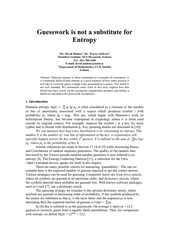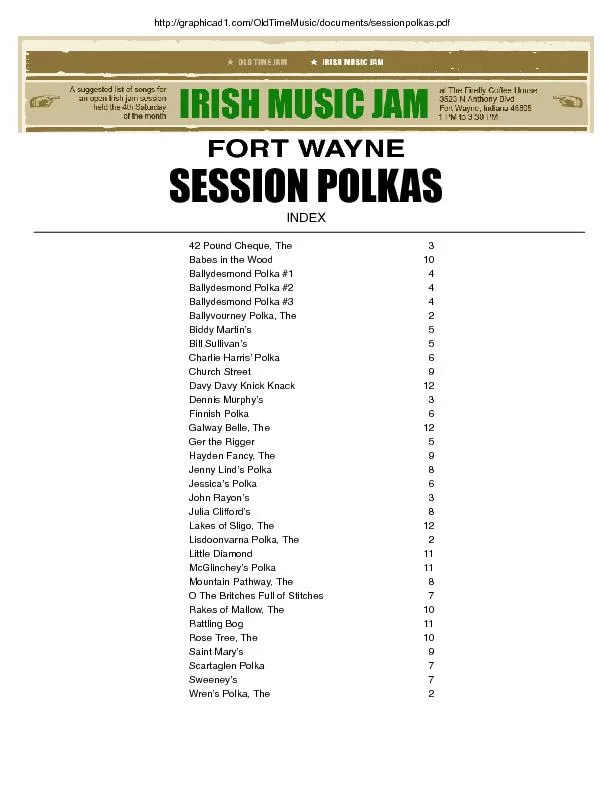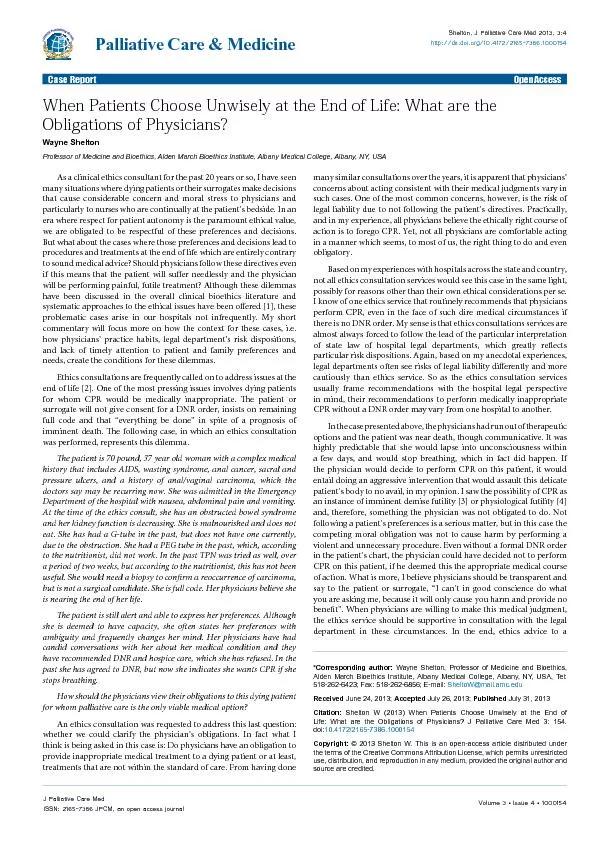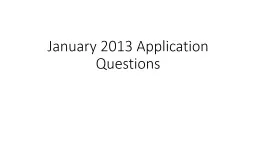PDF-*Dr. David Malone1, Dr. Wayne Sullivan2, 1Hamilton Institute, NUI Mayn
Author : stefany-barnette | Published Date : 2015-08-02
on calculation for guesswork asymptotics 1 Introduction Shannon entropy hp pi lg pi is often considered as a measure of the number of bits of uncertainty associated
Presentation Embed Code
Download Presentation
Download Presentation The PPT/PDF document "*Dr. David Malone1, Dr. Wayne Sullivan2,..." is the property of its rightful owner. Permission is granted to download and print the materials on this website for personal, non-commercial use only, and to display it on your personal computer provided you do not modify the materials and that you retain all copyright notices contained in the materials. By downloading content from our website, you accept the terms of this agreement.
*Dr. David Malone1, Dr. Wayne Sullivan2, 1Hamilton Institute, NUI Mayn: Transcript
Download Rules Of Document
"*Dr. David Malone1, Dr. Wayne Sullivan2, 1Hamilton Institute, NUI Mayn"The content belongs to its owner. You may download and print it for personal use, without modification, and keep all copyright notices. By downloading, you agree to these terms.
Related Documents














